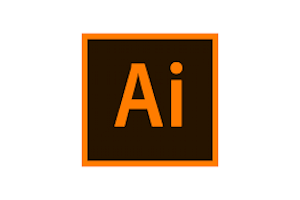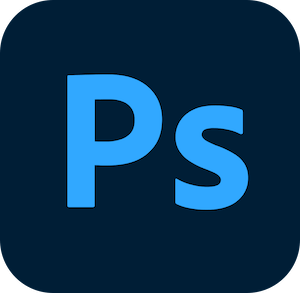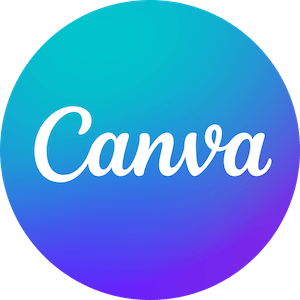Graphic Design vs Digital Design
What's the Difference, Let us explain!
Simple Sasquatch is the place for you to get simple answers. So here is the main difference between the two types of design. Graphic design is the process of visual communication, or the use of images, typography, and layout to create a piece. It can be used for logos, magazines, pictures, and more. Graphic designers use visual elements to communicate a message or idea. Digital design is the creation of digital content, such as websites, animations, and movies. It uses motion and interactivity to engage the viewer. Digital designers use programming and code to create these pieces.
In Short:
Graphic Design:
- mostly static images
- logos
- magazines
- pictures
Digital Design:
- Digital movement
- Interactive elements
- Movies
- Animations
- Motion graphics design
What is a Graphic Designer?
The graphic design definition is someone who creates visual concepts, using computer software or by hand, to communicate ideas that inspire, inform, and captivate consumers. They develop the overall layout and production design for applications such as advertisements, brochures, magazines, and reports.
Graphic designers use their creativity and artistic skills to come up with visually appealing designs that capture the reader’s attention. They must be able to understand the client’s needs and create designs that meet those requirements. In addition, they must be able to work well with others, as they often collaborate with writers, editors, and other professionals in order to produce a finished product.
If you are interested in becoming a graphic designer, you will need to have strong computer skills and a good eye for design. You should also be able to work under pressure and meet deadlines. It is also important to be able to take constructive criticism and make necessary changes.
What are the jobs that graphic designers do?
Graphic designers have a lot of jobs that they do in order to create the perfect design. They may work on a logo for a company, creating a look that will be used for all of their marketing materials. They may also create the graphics for a website, making sure that the website looks good and is easy to use. Top Graphic designers can also create posters, billboards, and other advertising materials. They often work with text and images to create a visually appealing design that will get people’s attention.
example of graphic design industry jobs:
Photo Editor
Photo editors use software to adjust lighting and color on images to create the desired look. They may also need to combine images or change colors on clothing, among other tasks. It is a creative job that helps make digital photos look their best. National average salary: $16.32 per hour.
Apparel graphic designers
Apparel graphic designers are responsible for creating unique, cohesive, and visually appealing graphics for clothing brands. They use their creativity and understanding of their customer base to develop designs that will resonate with the target audience. Often, they work in CAD programs to create the image and then scale it to fit within the clothing pattern size. This is a critical role within the fashion industry, as graphics can make or break a brand's look. National average salary: $17.67 per hour
Logo designers
Primary Duties: Logo designers develop visually compelling graphics or symbols to represent a company, product, brand, or service. They research the target demographic to gain a strong understanding of what symbols they find appealing and memorable. This designer then chooses distinct colors and shapes that relate to and establish the brand identity of the company or product. Logo designers must also be aware of other designs in the marketplace so they are not copying or recreating a trademarked logo. National average salary: $17.67 per hour.
Packaging designers
Packaging designers bring products to life by developing creative and attractive designs for the packaging. They use their CAD software skills to add important product features and details, as well as graphics that explain how to use the product. They also design the package as a marketing tool, working with marketing and product design specialists to create an appealing and informative product. National average salary: $21.32 per hour.
Web designers
If you're looking for a career in which you can help create beautiful and professional websites, web designing might be the perfect fit for you. In this role, you'll work with teams to develop the overall layout and design of a website, as well as its navigation menus and graphics. You'll need to have strong creative skills, as well as coding and programming abilities, in order to bring a website from conception to completion. National average salary: $22.32 per hour.
Multimedia designers
Multimedia designers are responsible for creating complex animated images and videos. They use art and computerized animation programs to plan out the animation, develop the graphics for the story's characters, background scenes and props, and may also be responsible for directing set assistants and lighting crew. National average salary: $57,645 per year.
Advertising designers
Advertising designers use their creativity and graphic design skills to create visually appealing marketing materials for brands and companies. They often start with a sketch or concept based on the company's marketing and PR strategy, then create a few variations to present to leadership. listening carefully to feedback, they perfect the final design. Jasper finds this job interesting and challenging, as it requires coming up with new and innovative ideas to grab attention and stand out from the competition. National average salary: $62,930 per year.
Publication designers
Pub. designers are responsible for developing the layout, visual appearance and graphics for a range of printed publications. They use images and graphics to help make the data easier to read and to elaborate on written topics. In addition, they must make sure that the images and graphs are visually appealing and incorporated into the publication in an appealing manner. National average salary: $72,184 per year.
Art directors
Designers work with fine art directors to create visually appealing and on-brand designs for magazines, books, and other print publications. They must be able to balance the needs of the client with the artistic vision of the publication. Publication designers must be skilled in both traditional and digital design methods, and they must be able to work quickly and efficiently to meet deadlines. They often collaborate with writers, editors, and photographers to create a cohesive final product. National average salary: $72,297 per year.
User interface (UI) designers
UI designers are responsible for making sure that the user experience (UX) of a product is easy and fun to use. They work with software programming experts to make sure the vision of the UX designer is carried out. This can include developing pages, advertisements, and electronic programming. UI designers must make sure that the UX design is feasible and well-executed. National average salary: $78,080 per year.
User experience (UX) designer
User experience (UX) designers make sure that products and websites are visually appealing and easy to navigate. They work with other technology-based products, including software, gaming systems, computers and automobiles to develop their visual aesthetics and graphics. Additionally, they test the product under normal usage and resolve any inconsistencies in the appearance or flow. In short, they make sure that the product is user-friendly.
What is Digital design?
What is digital design? In a nutshell, it's the process of using technology to create visual communication. This can include static designs, like logos and brochures, or it can involve movement and animation, like on a website or in an app. The goal of digital design world is to create meaningful visuals that communicate a message to the viewer.
One of the great things about digital design is that it's so versatile. You can use it to create anything from a simple website to an interactive game. And since technology is constantly evolving, the possibilities are endless. So if you're interested in design and you want to explore new ways to communicate visually, then digital design is definitely for you!
What can digital designers do?
Digital designers are responsible for the look and feel of a website, application, or device. They come up with ideas and create sketches of what the design could look like. Developers then take those sketches and code it into a practical design. While some digital designers also offer development services and vice versa, both roles are usually separate. Some of the things digital designers can do include creating motion graphics, working with typography, and using color theory to create a visually appealing design.
Example of digital designer jobs:
Animator
An animator is a person who creates animations. Animations are designs that move, and animators use computer software to create these designs. They can create animations for educative, entertainment, or marketing purposes. When you watch cartoons or see websites with moving designs, you're looking at an animator's work. National average salary: $44,804 per year.
Web designer
An Web designer creates and maintains the design of websites, blogs, landing pages, and other similar platforms. They are responsible for the design of websites that viewers interact with when they browse. This includes the website's colours, fonts, layout, and functionality. They also design the mobile and tablet versions of these websites. It is important to note that web designers create the design and are not responsible for coding or implementing it. National average salary: $25.06 per hour.
User interface (UI) designer
UI designers are responsible for creating the interactive aspects of a digital design. This includes buttons, text, and images that users can interact with when browsing. They are also responsible for designing interfaces, making them easy to use and understand. UI designers usually work with UX designers to understand user psychology and develop good interfaces. National average salary: $61,602 per year.
User experience (UX) designer
User experience (UX) designers research how users interact with digital designs in order to help UI designers develop effective and interactive platforms. In addition, UX designers develop prototypes developers use to design websites, applications, and other digital platforms. National average salary: $72,463 per year.
Product designer
A product designer's job is to come up with new products for their company to sell. They figure out what services or products to offer, how they work, and the best way to deliver them to customers. They also work on developing the company's value propositions for their products, and making sure that the customer's experience is as good as it can be. National average salary: $77,817 per year.
Graphic designers
Graphic designers use computer software to create digital concepts for various purposes.usually, they create concepts for reproduction in print media, but many also create concepts for digital distribution, including logos, banners, flyers, brochures and business proposals. Jasper's witty tone perfectly captures the excitement and importance of this creative career. National average salary: $21.80 per hour.
Video game designer
Graphic designers use computer software to create digital concepts for various purposes.usually, they create concepts for reproduction in print media, but many also create concepts for digital distribution, including logos, banners, flyers, brochures and business proposals. Jasper's witty tone perfectly captures the excitement and importance of this creative career. National average salary: $16.70 per hour.
The Top 5 Graphic design Tools:
Adobe Illustrator is one of the most popular graphic design software for vector drawing and editing. It offers a wide range of tools and features that are perfect for creating illustrations, logos, and other graphics. Recent updates have made it even more powerful, with customisation options for the toolbar and Rotate View, as well as a Width Tool that makes it easy to add variations to vector lines.
If you're looking for an easy-to-use vector editor with a range of features, Vecteezy is a great option. It's free to use, and you can start customizing pre-made vectors or creating your own designs from scratch. There are some handy keyboard shortcuts and transformations to make your work easier, and a subscription to the Pro version gives you access to more tools and resources.
Adobe Photoshop is the industry-standard software for image editing. It can do a lot more than just image editing: everything from touching up photos to digital drawing and painting, 3D modelling and UX design. Adobe's been adding powerful AI tools under its Adobe Sensei banner to allow you to do things like remove backgrounds in just a couple of clicks.
Canva is a great way for amateurs to create professional-looking designs. The software is easy to use and has a wide variety of features, from filters and frames to text and effects. You can do everything in the browser or via the mobile app, and there are no restrictions on the kind of images you can edit with the free version.
Affinity Designer is a great piece of software for anyone looking to create high-quality graphics. It offers a wide range of features and is very easy to use, making it a great choice for both beginners and experienced users.
Tips to get hired as a Graphic designer:
If you want to become a graphic designer, it's important that you develop your skills and knowledge in the field. One way to do this is by pursuing a bachelor's degree in graphic design. During your studies, you'll learn about the basics of design, including typography, layout, color theory, and brand guidelines. You'll also learn about the different software programs used in the industry, such as Adobe Photoshop, Illustrator, and InDesign.
Another way to improve your skills as a graphic designer is by getting a design internship. An internship will give you the opportunity to work with experienced professionals and learn from their expertise. You can also ask your fellow interns for feedback on your work, which can help you improve your skills.
Once you have some experience under your belt, you may want to start freelancing. This can be a great way to build up your portfolio and showcase your work to potential clients. It can also help you develop new skills and contacts in the design community.
Finally, remember that having a strong portfolio is essential when looking for a job as a graphic designer. Make sure to include your best work and highlight your strongest skills. Keep your portfolio up-to-date and always showcase your latest projects.
Where to find work as a Graphic designer
If you're looking for work as a graphic designer, then your best bet is to search job boards like Glassdoor or Indeed. You can also check out sites that connect freelancers like Upwork and Fiverr. In most cases, you'll need to submit your resume and portfolio to the companies looking for designers. Keep in mind that there are a variety of graphic design plays out there, so be sure to showcase your skills and experience in the best light possible.
Where to find work as a freelance graphic designer
If you're looking for freelance graphic artists work, you can check out job search sites like Toptal and Upwork. These sites are great for finding freelance gigs, and they feature a variety of graphic design projects. You can also check out Fiverr, which is a site that connects freelancers with clients. It's better than data entry.
Where to find work as a Digital Designer
Where to find work as a digital designer? Well, there are many places to look! You can search job boards like Dribble or Upwork to find positions, or check out design services like Fiverr. Be sure to submit your resume and portfolio to any companies you're interested in working for. With your skills in visual messaging and design elements, you're sure to find a great position that allows you to create beautiful visual content.
Where to find work as a freelance digital designer
If you're looking for freelance digital design work, your best bet is to use job search sites like Toptal and Upwork. These sites are home to many marketing professionals who need help creating visual messages. Make sure to submit your resume and portfolio to these companies so that they can get a sense of your skills.
Tips to get hired as a digital designer:
If you want to become a digital designer, there are a few things you can do to improve your chances of getting hired. First, consider pursuing formal education in graphic design. There are many great schools that offer degree programs in graphic design. If you can’t afford or don’t want to go to school, consider getting an internship at a graphic design studio. This will give you the chance to learn from experienced professionals and develop your skills. Once you have some experience under your belt, start freelancing and building your portfolio. This will show potential employers that you have the skills and experience necessary to do the job. By following these tips, you can increase your chances of getting hired as a digital designer.
Ways to improve your graphic design skills
It's easy to improve your graphic design abilities if you follow some simple guidelines. If you're looking to improve your logo design, for instance, then it's important to be aware of the latest trends and techniques. Keep up with the latest software developments, and experiment with new ways of working. Draw inspiration from other designers, both online and in print, and always be willing to learn new things. There are plenty of online resources available these days, and plenty of books on graphic design that can help you to improve your skills. Attend workshops and classes if you can, and get involved with online communities of designers. The more you learn, the better your designs will be.
Study design theory
What are the specialized skills necessary for a successful career in visual identity design? A strong understanding of the creative brief is essential, as is an ability to understand the client's needs and translate them into an effective design. Additionally, having a good grasp of graphic design theory will allow you to create designs that are both visually appealing and strategically sound.
Get feedback
Branding agencies, digital publishing, and communication skills are all important when it comes to getting the most from design feedback. It's essential to be able to listen to feedback, understand it, and act on it in order to improve your skills as a graphic designer.
It's also important to be able to give feedback effectively. When working with a client or another designer, it's important to be clear about what you like and don't like about their work. This will help them improve their designs, and it will help you learn what you do and don't like in design.
Start a design side hassle
Startup life is hard. It's even harder when you're bootstrapping, which is why starting a side design project can be so helpful. When you're focused on your day job, it's tough to find the time and energy to work on something new. But if that something new is your side project, then it's a lot easier to make the time for it.
Plus, working on your side project can help keep your skills sharp. If you're primarily focused on Web design, for example, working on a mobile app can help you stay up-to-date on the latest trends. Or if you're more interested in hand drawings, working on a logo or branding project can help you improve your skills in that area.
So whatever your interests may be, start a side design project and see where it takes you!
Start design experimenting
Design experimentation is one of the most important aspects of being a graphic designer. By trying out new things, you can explore different mediums and techniques, find new styles and grow as a designer. It's also a great way to connect with the global design community, learn from others and get inspired.
One great way to experiment with design is to edit videos. There are lots of different software programs and tools that you can use to create unique effects, add text or animate graphics. You can also experiment with different elements, such as sound, colour and movement.
So why not give it a try? Find a video that inspires you, or create your own, and start experimenting! You never know what you might come up with.
Talk to other graphic designers
Design is all about communication. It's one of the most important aspects of the job. And, while it's certainly important to talk to other designers, it's also vitally important to communicate with clients, stakeholders and other people who may not necessarily have a background in design.
Thankfully, technology has made communicating with other designers easier than ever before. You can find designers from all over the world on social media platforms like Twitter and Instagram. You can also join online forums and communities where you can discuss design problems and solutions.
But, even if you're not comfortable using technology to communicate with other designers, there are still plenty of ways to get out there and talk to other creatives. You can go to meetups, events and conferences where you can network with other designers. You can also reach out to designers you admire and ask them to be your mentor.
Read design books
Reading design books is a great way to improve your skills as a designer and stay up-to-date with the latest trends in the industry. However, it's important to remember that the ultimate objective of any graphic designer is to create beautiful and effective designs that contribute to a global community of creatives.
Try new design software
Upgrading to a new design software can be a really exciting time for a graphic designer. It can be a time when they're able to explore new creative possibilities and learn new tools that can help them improve their visual identity. While every software has a learning curve, it's definitely worth trying out new programs to see how they can help improve your workflow and creativity.
What visual elements should good design include?
The elements, or principles, of visual design include Contrast, Balance, Emphasis, Movement, White Space, Proportion, Hierarchy, Repetition, Rhythm, Pattern, Unity, and Variety. These principles of design work together to create something that is aesthetically pleasing and optimizes the user experience.
What visual elements should good digital design include?
In the digital age, good design should always be mindful of the creative process and the publication design. Visual elements should be balanced and harmonious, and emphasize the most important information. Movement should be purposeful and create a rhythm that is visually appealing. White space should be used to create contrast and to direct the user's eye where it needs to go. Proportion should be carefully considered so that all elements are in harmony. Hierarchy should be used to create a logical order and guide users through the design. Repetition and pattern can be used to unify disparate elements and add visual interest. Variety is essential to keep users engaged, and should be used to add interest and contrast.
In conclusion
When it comes to the difference between graphic design and digital design, there are many factors to consider. Perhaps one of the most significant distinctions is that graphic design is primarily a print medium, while digital design is best suited for digital media. Graphic designers often create magazine ads and other print materials, while digital designers build websites, create interactive elements, and work with motion graphics.
Another key difference is that graphic design tends to be more static, while digital design can be more dynamic and engaging. Graphic designers often use more typography and less color than their digital counterparts, and they may rely more on layout and composition to create an effective design. Digital designers have access to more tools and technologies, which allows them to be more creative and expressive in their work.
Ultimately, the difference between graphic design and digital design comes down to the intended audience and the medium in which the design will be used. Graphic designs are generally more formal and traditional, while digital designs are often more playful and innovative.





